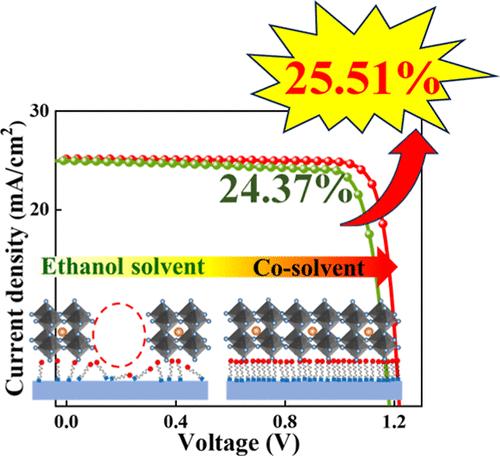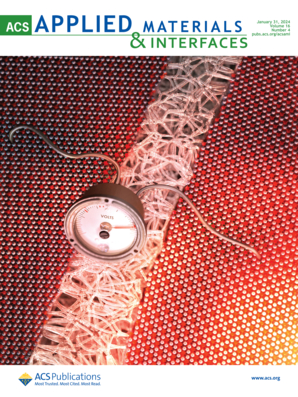Reinforcement of Carbazole-Based Self-Assembled Monolayers in Inverted Perovskite Solar Cells
IF 8.3
2区 材料科学
Q1 MATERIALS SCIENCE, MULTIDISCIPLINARY
引用次数: 0
Abstract
Self-assembled monolayers (SAMs) with excellent hole conduction capabilities significantly improve the performance of inverted perovskite solar cells (PSCs). However, the amphiphilic nature of SAMs causes the spontaneous formation of spherical micelles in solution, limiting their surface coverage and uniformity on indium tin oxide (ITO) substrates. Furthermore, the distribution of the SAMs directly affects the morphology of perovskite films and the charges transfer properties at the buried interface. This study employs a cosolvent strategy combining n-butanol and dimethyl sulfoxide to improve the uniform spreading of SAMs on ITO. The synergistic interaction between the solvent molecules smooths the surface of [2-(3,6-dimethoxy-9H-carbazol-9-yl) ethyl] phosphonic acid (MeO-2PACz) and enhances its surface coverage. The cosolvent based MeO-2PACz has the characteristics of concentrated surface potential distribution and high work function, exhibiting uniform and enhanced P-type behavior. Additionally, the cosolvent-treated SAMs provide uniform nucleation sites for the crystallization of perovskite, effectively eliminating void defects at the buried interface and improving the crystallinity of perovskite films. Consequently, the optimized device achieves a power conversion efficiency (PCE) of 25.51% and a fill factor of 84.38%. Furthermore, the ordered SAMs improve the stability of PSCs, with encapsulated device retaining 92.63% of its initial PCE after operating for 1500 h under simulated AM 1.5G standard irradiation in air at 65 °C.

求助全文
约1分钟内获得全文
求助全文
来源期刊

ACS Applied Materials & Interfaces
工程技术-材料科学:综合
CiteScore
16.00
自引率
6.30%
发文量
4978
审稿时长
1.8 months
期刊介绍:
ACS Applied Materials & Interfaces is a leading interdisciplinary journal that brings together chemists, engineers, physicists, and biologists to explore the development and utilization of newly-discovered materials and interfacial processes for specific applications. Our journal has experienced remarkable growth since its establishment in 2009, both in terms of the number of articles published and the impact of the research showcased. We are proud to foster a truly global community, with the majority of published articles originating from outside the United States, reflecting the rapid growth of applied research worldwide.
 求助内容:
求助内容: 应助结果提醒方式:
应助结果提醒方式:


